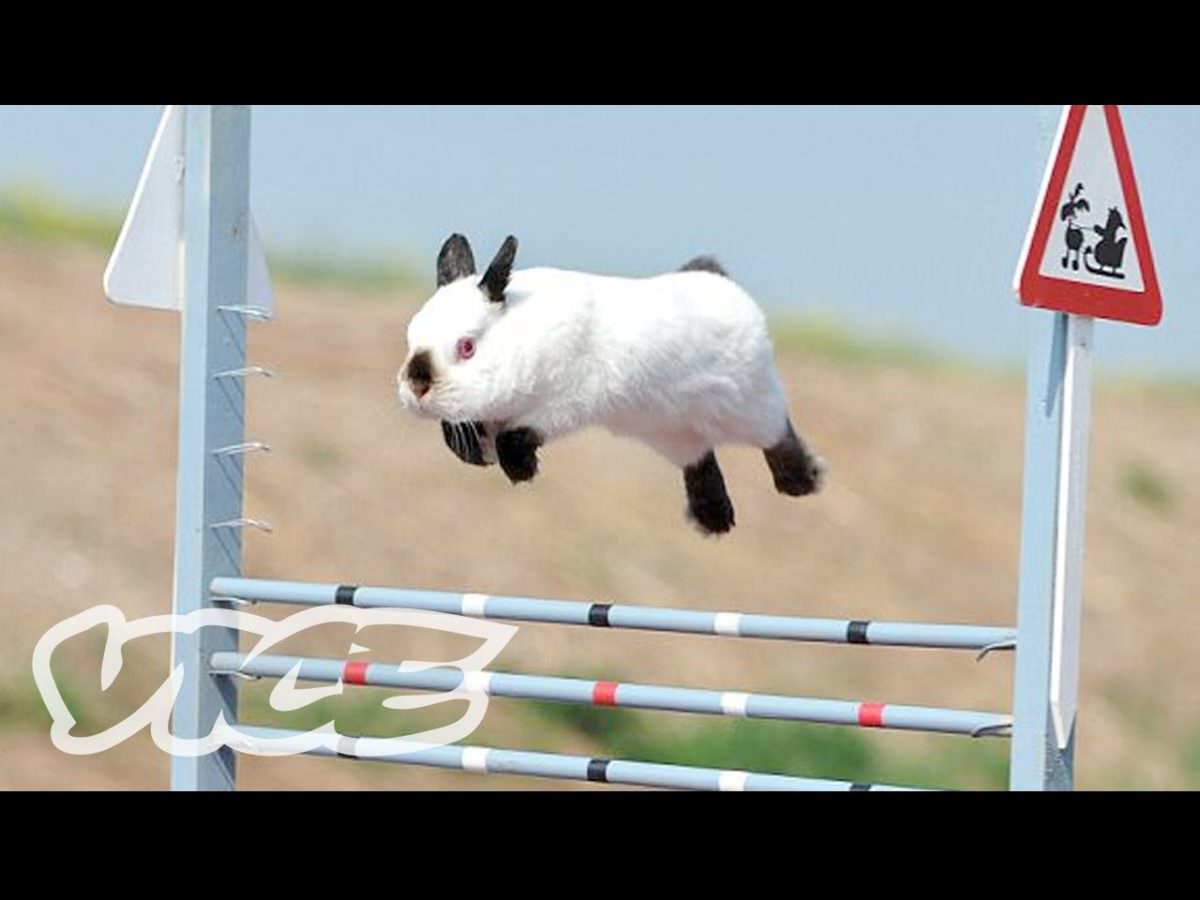You sure can!

Barbara Heidenreich is a professional animal trainer who’s worked with everything from exotic birds to lions, and has always had a special fondness for bunnies – as a child, she had them as pets. Eventually, this led to her releasing a DVD called Bunny Training 101.
“You’d be surprised what personalities they have, they’re really quite social animals, so they can really respond to human companionship,” she says. Rabbits are fully capable of taking all kinds of training, learning commands and performing tricks both useful (get into your carrying case!) and fun (dunk this tiny basketball into this tiny basketball hoop!). Having been domesticated hundreds of years ago, pet rabbits aren’t just tolerant of humans, but can (depending on the individual) crave attention and affection. Additionally, they can also be easily litter-trained; like cats, their instinct is to poop and pee in one specific spot.
Heidenreich likes to start rabbit training with a behavior called “targeting,” which basically teaches the animal to orient a body part – for rabbits, it’s usually their nose – towards a specific object. Rabbits are naturally curious animals, and most, will naturally go investigate if they’re pointed in a specific direction by a human (Heidenreich likes to use a simple ball on the end of a stick, but many rabbit owners will simply use an extended finger). When that happens, start rewarding the rabbit with a treat, like cilantro, parsley, or a little bit of apple (not too much apple; it can be bad for their sensitive stomachs). “Once they learn to point their nose toward that object, you can train them to go anywhere you want them to go,” says Heidenreich.
Pet rabbits can be easily trained to do many of the daily things you need them to do, like hopping up onto a scale or right into a carrying case. (The latter is much better than simply picking up the rabbit if you need to travel with them; unlike cats or dogs, rabbits are wholly prey animals, so they might get very freaked out when a human goes to pick them up. But if you can train a rabbit to hop right into a carrying case for a trip to the vet? That’s ideal.)
From there you can teach a rabbit all kinds of things: high-fiving, following, hopping up onto a lap, picking up small objects (they’re more dexterous at this than you’d think), even playing fetch. And they seem to like it! Animals in captivity, whether in zoos or in houses, can get bored; while they lack the struggle for survival, their instincts are still geared up. In zoos, teaching an animal tricks isn’t just to entertain kids, it’s also used to engage the animal’s natural behaviors and exercise its problem-solving brain. (The more science-y term for this is “enrichment.”) Rabbits take to this well: “I think they appreciate the challenge of learning new things,” says Heidenreich, noting that they seem more excited when presented with new tasks.
But understanding exactly how to tell when a rabbit is excited – or stressed, afraid, or tired – is a key element of training this animal. Rabbits aren’t like dogs or cats; you’ll have to learn an entirely new language to communicate with them. And that language probably won’t be verbal. “Humans are so used to using language to communicate, so we default to using language with animals, thinking they’ll understand us. But they don’t,” says Heidenreich. “I will say in general in my animal training that I only use sounds if I feel that’s the main way that animal perceives the world. So for a lot of animals I tend to be more focused on visual cues than auditory.”
Rabbits us most body language to show their emotions: tail position, posture, muscle tension, and pose are all major indicators of what a rabbit is feeling. And sometimes, these messages are counterintuitive. Rabbits, like some birds and reptiles and other animals, can go into what’s called “tonic immobility” in certain situations. When placed on their back, for instance, rabbits will often go totally motionless, which some owners may misinterpret as relaxation, allowing the owner to, say, clip the rabbit’s nails. But it’s actually a form of terror paralysis, kind of like playing dead. Exactly the opposite of relaxing!
With that, here is a video of some pretty sick rabbit tricks.